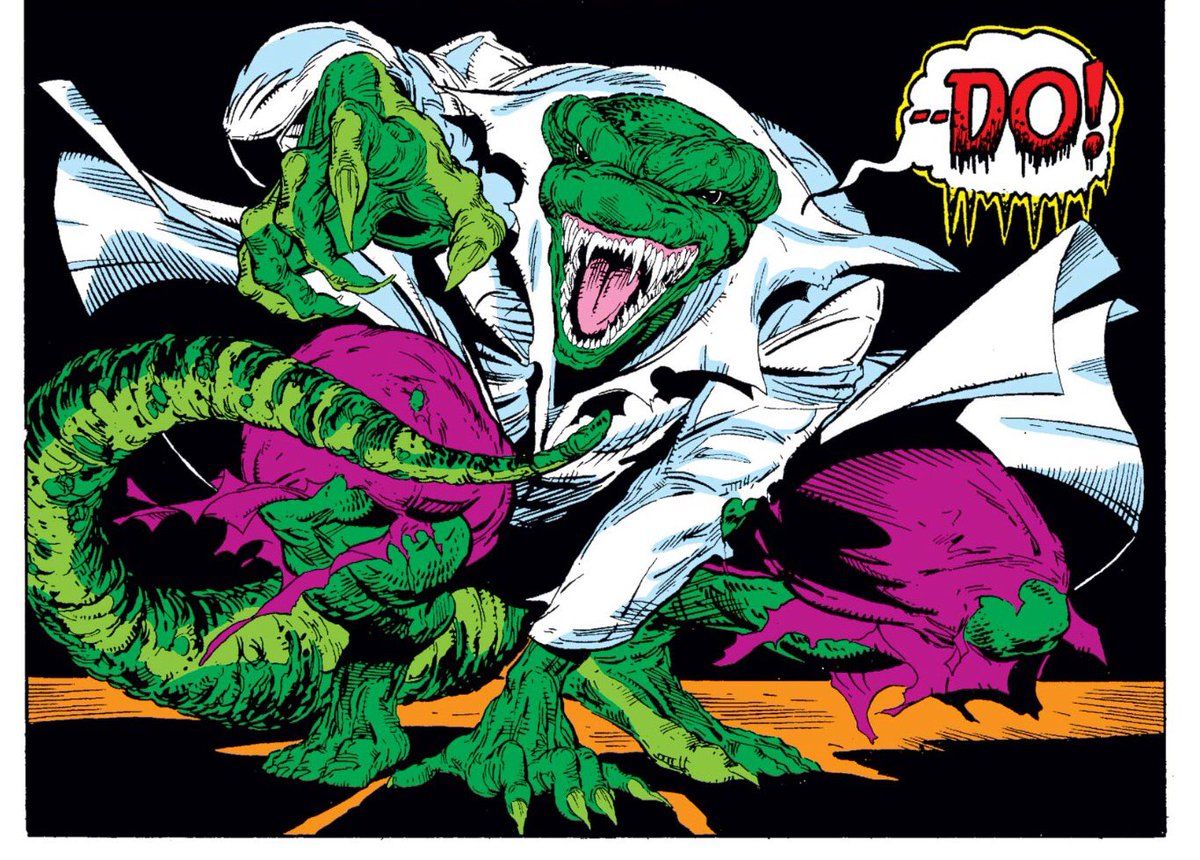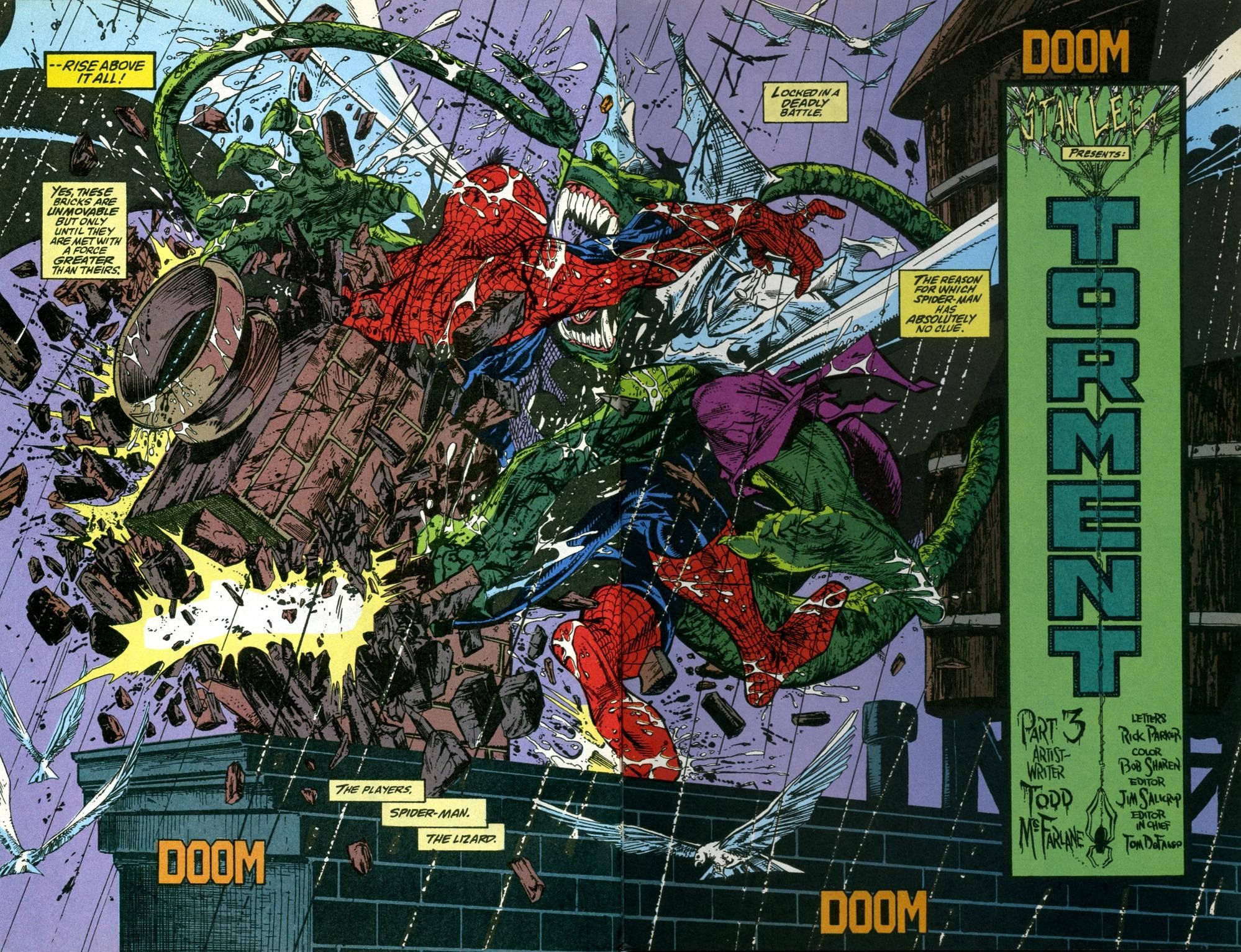
The Lizard is one of Spider-Man's most iconic villains, as well as one of his most tragic. A noble scientist who yearned to restore the limb he had lost during wartime, Curt Connors was sort of surrogate father figure for Peter Parker who also served as his greatest confidant. Likewise, his dueling nature with his dual personality as the Lizard made him especially relatable in a way similar to the Hulk.
Despite his being a literal version of the animal themes consistent in Spider-Man's rogues gallery, the Lizard was never the most intimidating of villains. That all changed once superstar artist Todd McFarlane put his pen to work drawing him. Reimagined as a dinosaur-esque killer straight out of a monster movie, McFarlane changed the Lizard from a tragic scientist to a brutalizing beast. Here's how the Image Comics founder evolved Curt Connors into a much more formidable opponent.

In The Amazing Spider-Man #313 by David Michelinie and McFarlane would debut the now iconic redesign of the Lizard. For years, the reptilian creature had retained the original, somewhat goofy design given to him by Steve Ditko. This design certainly made him a humanoid lizard, but he was anything but scary. This new look was much more monstrous, having an almost dinosaur-like appearance with a more pronounced snout along with ferocious fangs and claws. His actions were also much more bloodthirsty, a far cry from the cartoony looking villain of the '60s.
In a tie-in to the X-Men's "Inferno" storyline, Curt Connors unwittingly transforms into the Lizard to protect his family. Beforehand, Curt was able to control the transformation for the longest while, only transforming into his reptilian alter ego whenever he felt the need to. This potential threat level still put a strain on his family, making his wife and son Billy grow estranged from him. This time, however, the stress of having to always potentially keep the Lizard in check forces Connors to become him nonetheless. He comes to the aid of his wife and child, who are under attack by a demon stemming from the crossover storyline. This makes Martha believe that Curt is in control, but in actuality, the Lizard only saved them in order to kill them himself.
Spider-Man finds them and keeps the Lizard from attacking Connors' family, and finally manages to force feed him an antidote that changes him back into the scientist. Despite his family's pleas, Curt pushes them away, feeling that his presence would only endanger them.

The Lizard would next appear in the inaugural storyline "Torment" featured in Spider-Man #1-5, written and drawn by McFarlane. There, he had seemingly lost all influence from Curt Connors, and was now nothing more than a monstrous, mindless beast. This leads the creature to go on a murderous rampage across New York City. The gory violence the reptile engaged in was beyond anything ever seen in a Spider-Man comic book before, highlighting the more terrifying nature of McFarlane's redesign. It also foreshadowed the gothic horror of McFarlane's eventual Spawn series.
Unbeknownst to Spider-Man, the Lizard was under the hypnotic control of the voodoo priestess, Calypso. Having once been the lover of Kraven the Hunter, Calypso's vendetta against Spider-Man came after Kraven's suicide in the iconic storyline "Kraven's Last Hunt." Eventually, Spider-Man was able to, as the storyline constantly espoused, "rise above it all," defeating Calypso and the Lizard. Spider-Man believed the Lizard dead after being unable to find him in the ensuing fracas left from their battle, but the villain would return later down the line.
Since then, most versions of the Lizard would maintain McFarlane's more fearsome design and characteristics, with Spider-Man: The Animated Series having a hybrid of the McFarlane and Ditko designs for its version of the villain. Though Curt Connors would occasionally be able to retain control of his alter ego, the Lizard's bloodthirsty antics and redesign would continue to torment Spider-Man throughout the years.
0 Comments